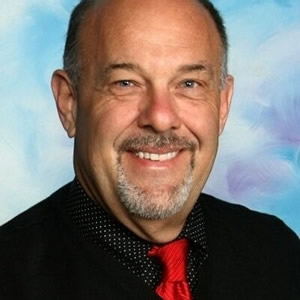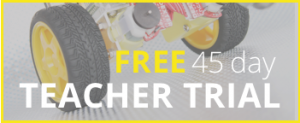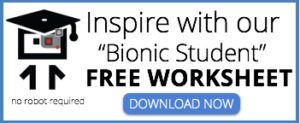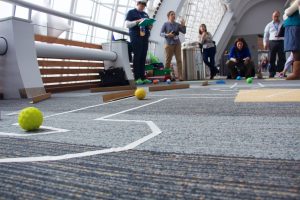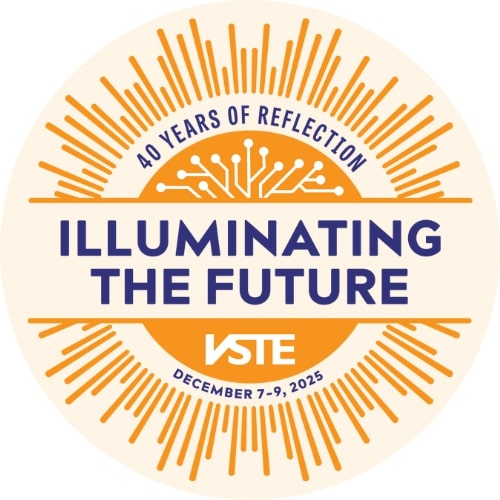The following post was written by VSTE member Chelsea VanKerkhove, a special education teacher at Alvey Elementary School in Prince William County.
The exceptional students in my classroom are all non-verbal and rely on technology everyday. Technology is not only fundamental for student learning, but necessary for students to communicate. Whether it is an electronic tablet, such as an iPad, or a device which tracks eye-gaze, the students depend on technology to have a voice in our class. We also use technology to engage students in learning content material by presenting information in more dynamic ways.
The students are working on learning “core vocabulary” with their devices. Core vocabulary, including yes, no, more, want, stop, off and help, make up most of our daily vocabulary. By teaching these words it allows my students to use their technology to express themselves. We offer choices for the child involving food, toys, favorite activities and music by asking simple questions such as, “Do you want this?” It is very important to honor their wants, even if it is not the choice we as teachers hoped for. When students can communicate their basic wants, we will see them laugh, smile and sometimes even vocalize happy sounds.
Along with using the devices to communicate, we use various other forms of technology in our classroom as part of our daily routine. We use the Smartboard for our morning meeting, brain breaks, learning activities, experiments, and song choices. We also have a weekly computer lesson in the computer lab with our technology teacher. In addition, we use various switches to practice cause and effect. Using a Power Link switch, we are able to use a hand mixer, blender, food processor, and popcorn popper during cooking lessons. We are also able to use the switches during our scientific experiments, such as using the switch to activate a blow dryer when determining the effect wind has on various items.
While technology is important for all students, my classroom uses technology to enable them to communicate and perform tasks that they would otherwise be unable to do. My students are very accustomed to technology as an everyday part of their lives and their learning experience. This has made technology not just an augmentation, but a necessity.
This short video will give you a view into my classroom.




